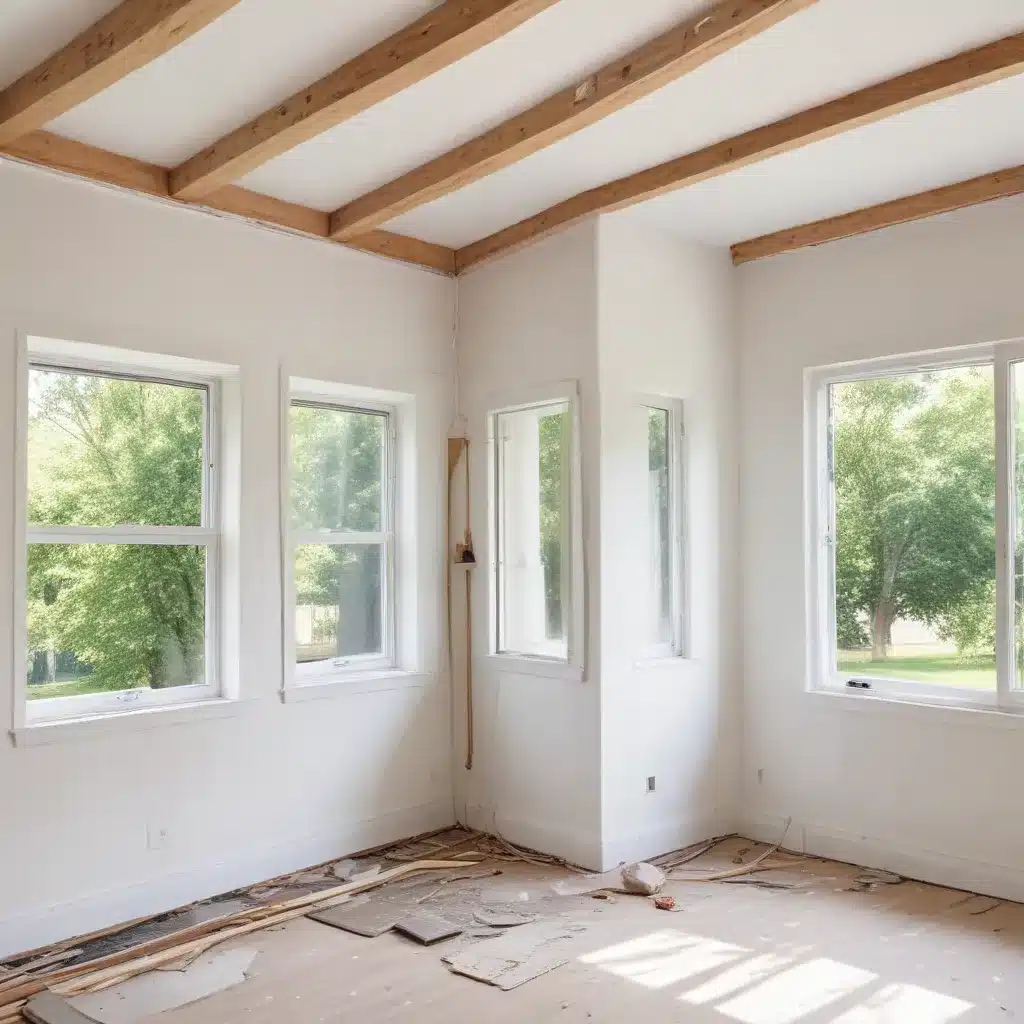
Eco-Friendly Renovations: Improving Energy Efficiency on a Budget
As an experienced home improvement consultant writing for Reluctant Renovator, I understand the importance of balancing your renovation dreams with practical, eco-friendly solutions. Sustainable home upgrades not only reduce your environmental impact but can also lead to long-term savings on energy costs, improved indoor air quality, and increased property value.
Whether you’re a cost-conscious homeowner or an eco-conscious renovator, this comprehensive guide will explore various budget-friendly strategies to make your home more energy-efficient and environmentally friendly. From renewable building materials and smart home technology to insulation upgrades and renewable energy solutions, we’ll cover a wide range of practical tips to transform your living space while keeping your wallet and the planet in mind.
Sustainable Materials and Resources
Embracing eco-friendly materials is a key aspect of sustainable renovations. By choosing renewable, recycled, or repurposed items, you can reduce waste, conserve natural resources, and create a healthier living environment.
Renewable Building Materials: Look for materials like bamboo, cork, or reclaimed wood that are rapidly renewable and have a lower environmental impact compared to traditional options. Bamboo, for instance, is a fast-growing grass that can be used for flooring, cabinetry, and furniture, providing a durable and visually striking alternative to hardwood.
Recycled and Repurposed Items: Incorporating recycled or repurposed materials into your renovation can significantly reduce your carbon footprint. Consider using recycled glass or concrete for countertops, reclaimed wood for flooring or furniture, and salvaged metal for fixtures and hardware. Not only do these choices conserve resources, but they can also add unique character and charm to your living space.
Energy-Efficient Appliances: When it comes to home appliances, prioritize Energy Star-rated models that are designed for optimal energy efficiency. Upgrading to Energy Star refrigerators, dishwashers, washing machines, and dryers can dramatically lower your household’s energy consumption and utility bills.
Home Insulation Upgrades
Improving your home’s insulation is one of the most effective ways to enhance energy efficiency and reduce your environmental impact. Proper weatherproofing and insulation can help maintain a consistent indoor temperature, minimizing the need for excessive heating or cooling.
Weatherproofing Techniques: Start by addressing any drafts or air leaks around windows, doors, and other entry points. Seal these gaps with caulk or weatherstripping to prevent the loss of conditioned air. This simple step can lead to an average savings of 15% on heating and cooling costs.
Attic and Wall Insulation: Ensure your home is adequately insulated, especially in the attic and exterior walls. Consider using eco-friendly insulation materials like cellulose, cotton, or sheep’s wool, which offer superior thermal performance and a lower environmental footprint compared to traditional fiberglass.
Window and Door Replacement: Upgrading to energy-efficient windows and doors can significantly improve your home’s thermal performance. Look for products with high Energy Star ratings and low U-values, which indicate better insulating properties. These upgrades can help you save on heating and cooling expenses while enhancing the overall comfort of your living spaces.
Renewable Energy Solutions
Integrating renewable energy sources into your home renovation can dramatically reduce your reliance on the grid and lower your carbon footprint. Explore options like solar panels, wind turbines, and geothermal heat pumps to generate clean, sustainable power.
Solar Panel Installation: Installing solar photovoltaic (PV) panels on your roof can provide a substantial portion of your home’s electricity needs using the power of the sun. While the initial investment may be significant, government incentives and long-term energy savings can make solar a worthwhile consideration.
Wind Turbine Integration: In areas with ample wind, a small-scale wind turbine can be an effective way to generate renewable electricity for your home. These innovative systems harness the power of the wind to produce clean, reliable power.
Geothermal Heat Pumps: A geothermal heat pump system uses the stable temperature of the earth to provide efficient heating and cooling for your home. These systems can reduce your energy consumption by 70% to 80% compared to traditional HVAC systems, making them a highly sustainable choice for your renovation.
Smart Home Technology
Incorporating smart home technology into your renovation can amplify your energy-saving efforts and provide you with greater control over your home’s environmental impact.
Automated Climate Control: Install programmable thermostats or smart thermostats that allow you to schedule and optimize your home’s heating and cooling cycles. These advanced systems can learn your preferences and adjust temperatures based on your schedule, potentially saving you up to 8% on your annual heating and cooling costs.
Energy Monitoring Systems: Integrate whole-home energy monitoring devices that track your electricity usage in real-time. These systems can provide valuable insights into your energy consumption patterns, empowering you to make informed decisions about adjusting your usage and identifying opportunities for further efficiency improvements.
LED Lighting Retrofits: Replace incandescent or fluorescent light bulbs with energy-efficient LED alternatives. LEDs use significantly less energy while providing comparable, if not superior, illumination, contributing to your overall energy savings.
By incorporating these sustainable strategies into your home renovation, you can create a more energy-efficient, eco-friendly, and cost-effective living space. Whether you’re tackling a full-scale remodel or focusing on specific upgrades, the combination of renewable materials, insulation improvements, renewable energy sources, and smart home technology can transform your home into a haven of sustainability.
To learn more about eco-friendly renovations and improving energy efficiency on a budget, I recommend checking out the resources available at Reluctant Renovator. Their website offers a wealth of information, from budget-friendly project ideas to expert advice on navigating the DIY vs. professional debate. Embrace the opportunity to make a positive impact on the environment while enhancing your living experience – your wallet and the planet will thank you.



